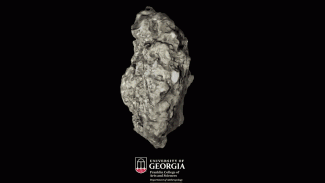Archaeologists from UGA and the Florida Museum of Natural History have discovered the location of Fort San Antón de Carlos, home of one of the first Jesuit missions in North America. The Spanish fort was built in 1566 in the capital of the Calusa, the most powerful Native American tribe in the region, on present-day Mound Key in the center of Estero Bay on Florida’s Gulf Coast.
Archaeologists and historians have long suspected that the fort, named for the Catholic patron saint of lost things, was located on Mound Key. Researchers have been searching for concrete evidence in the area since 2013.
Researchers continue to question how the Spanish survived on Mound Key and met their daily needs despite unreliable shipments of minimal supplies from the Caribbean and strained relations with the Calusa – whose surplus supplies they needed for survival. The only Spanish fort known to be built on a shell mound, Fort San Antón de Carlos was abandoned by 1569 after the Spaniards’ brief alliance with the Calusa deteriorated, causing the Calusa to leave the island and the Spanish to follow shortly after.
“Despite being the most powerful society in South Florida, the Calusa were inexorably drawn into the broader world economic system by the Spaniards,” Marquardt said. “However, by staying true to their values and way of life, the Calusa showed a resiliency unmatched by most other Native societies in the Southeastern United States.”
Researchers from the University of Florida, the University of Georgia and students from UGA’s archaeological field school used a combination of remote sensing, coring, ground-penetrating radar and excavations to uncover the walls of the fort and a few artifacts, including ceramic sherds and beads.
The fort is also the earliest-known North American example of “tabby” architecture, a rough form of shell concrete.
The researchers published their findings in Historical Archaeology.
The Florida Museum’s Karen Walker, Amanda Roberts Thompson of UGA and Lee Newsom of Flagler College also co-authored the study.
National Geographic provided funding for the research. Additional support for the project came from a faculty research grant from the University of Georgia, the John S. and James L. Knight Endowment for South Florida Archaeology and the National Science Foundation.

